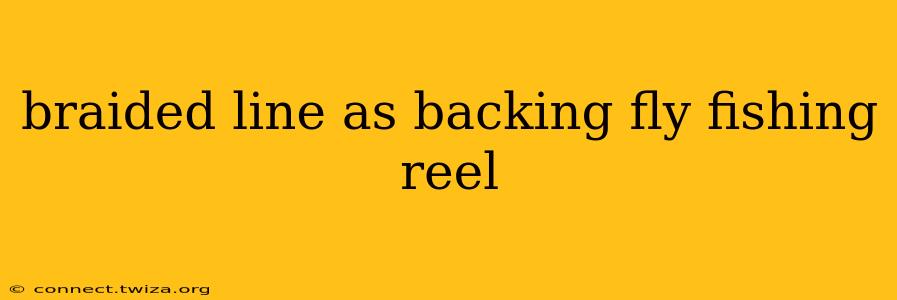Fly fishing demands reliable equipment, and your reel is no exception. While the fly line itself is crucial, the backing plays a vital, often overlooked, role in ensuring successful fishing trips. Many anglers are turning to braided line as backing, and for good reason. This guide will explore the advantages, disadvantages, and best practices for using braided line as backing on your fly fishing reel.
Why Use Backing on a Fly Fishing Reel?
Before diving into the specifics of braided line, let's establish why backing is necessary. Your fly line, especially on larger reels, only occupies a portion of the spool's capacity. Backing fills the remaining space, providing a buffer for long runs from hard-fighting fish. Without backing, a strong fish could easily strip all your fly line, resulting in a lost fish and potentially a lost fly line.
What are the Benefits of Using Braided Line as Backing?
Braided line offers several compelling advantages as fly fishing reel backing:
-
High Strength-to-Diameter Ratio: Braided line packs an impressive amount of strength into a small diameter. This allows you to load significantly more backing onto your reel compared to monofilament, increasing your capacity for fighting larger fish.
-
Small Diameter: The smaller diameter of braided line means you can fit more onto your spool, giving you a considerable advantage when battling powerful fish.
-
Durability: Braided lines are generally more durable and resistant to abrasion than monofilament, making them a reliable choice for long-term use.
What are the Drawbacks of Using Braided Line as Backing?
While braided line excels in many aspects, there are some drawbacks to consider:
-
Knot Strength: Tying a secure knot between the braided backing and your fly line is crucial. Improper knot tying can lead to line breakage under pressure. Practice is key to mastering this essential skill.
-
Memory: Some braided lines exhibit memory, meaning they can retain a "set" shape after being on the reel for a while. This can affect casting performance if it's not managed correctly.
-
Abrasion on the Reel: The aggressive nature of braided line can sometimes cause abrasion on the spool of your reel over time.
How Much Backing Should I Use?
The amount of backing you need depends on several factors, including the size of your reel, the diameter of your fly line, and the type of fishing you're doing. A general guideline is to fill approximately 2/3 of your reel's capacity with backing, leaving the remaining space for your fly line and leader.
What Kind of Knot Should I Use to Connect Backing to Fly Line?
Choosing the right knot is crucial for preventing line failure. Popular choices include the Albright knot and the Nail knot. Each knot has its nuances; research and practice are vital to mastering them. You want a knot that is strong and reliable, and minimizes bulk.
Can Braided Line Affect My Fly Line's Performance?
While properly tied, braided line shouldn't directly impact the performance of your fly line during casting. However, excessive tension during retrieval and spool management are crucial to preventing tangling and reducing the possibility of friction between the two lines.
Is Braided Line Better Than Monofilament for Backing?
Both braided and monofilament lines have their place as backing. Braided line’s high strength-to-diameter ratio makes it ideal for situations where long runs from large fish are expected. Monofilament backing offers a softer feel and is more forgiving on your reel, but sacrifices capacity. The best choice depends on your personal preferences and fishing style.
Conclusion: Making the Right Choice for Your Fly Fishing Needs
Ultimately, the decision of whether or not to use braided line as backing comes down to your individual needs and preferences as an angler. Weighing the advantages and disadvantages outlined above will help you make an informed choice. Remember to practice proper knot tying and reel management to maximize your chances of success on the water.
